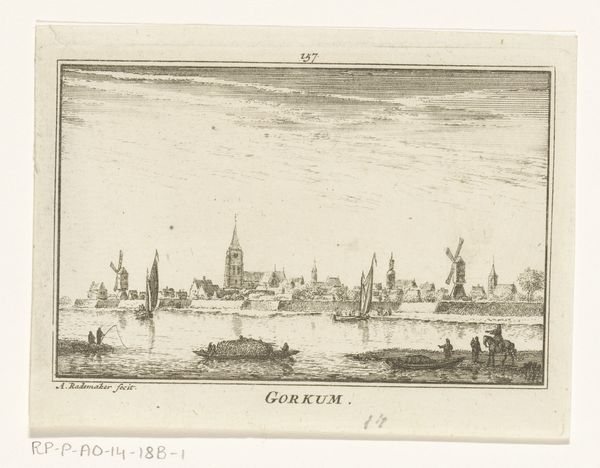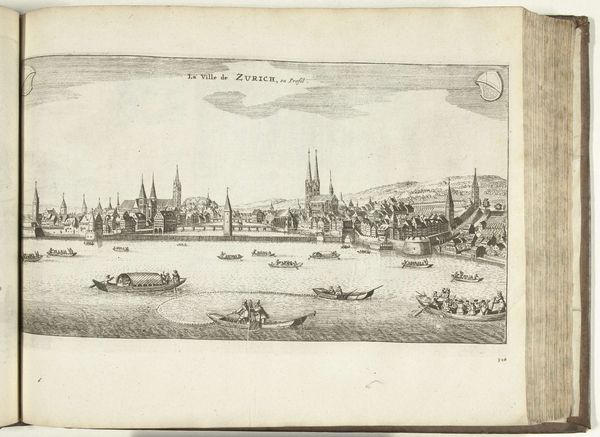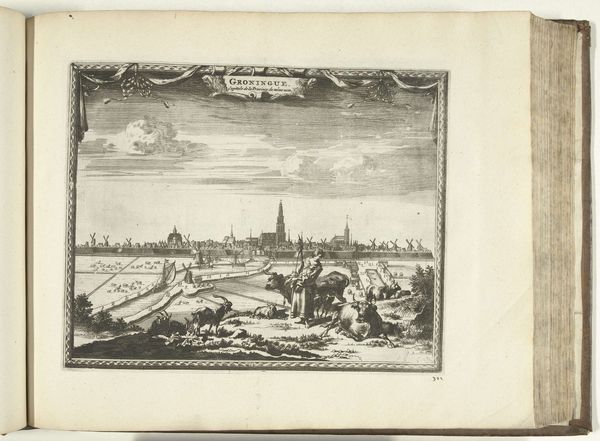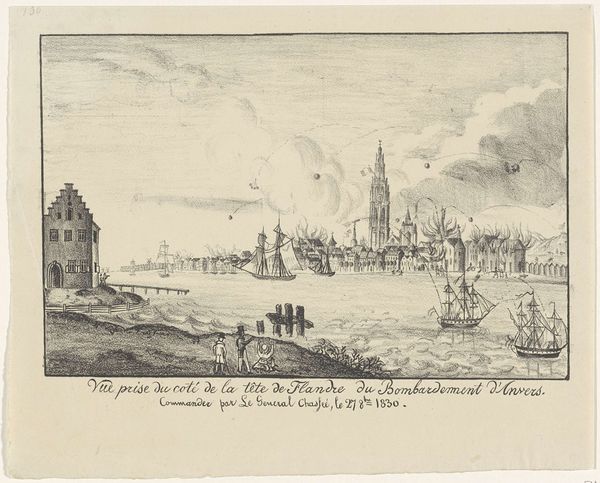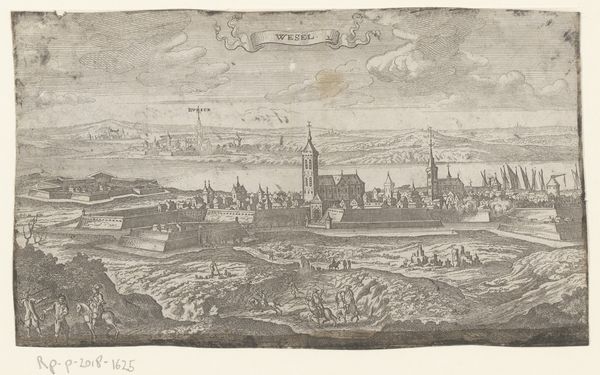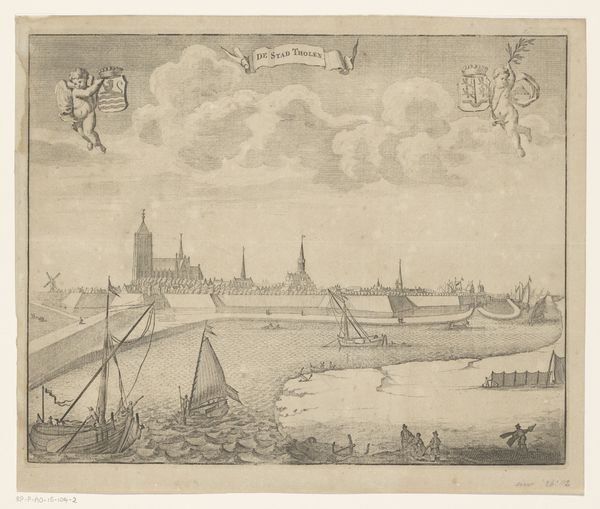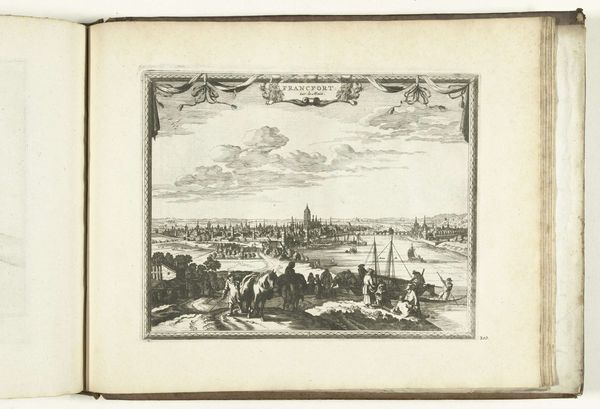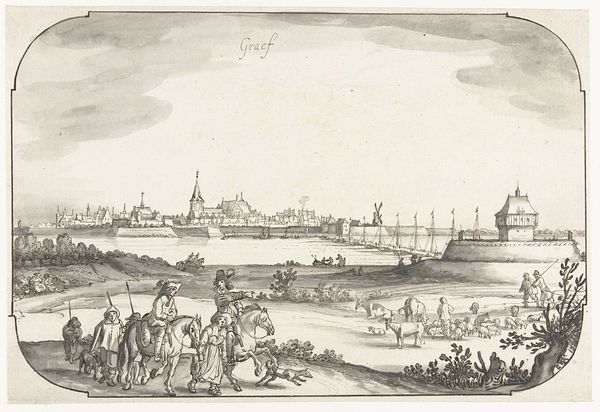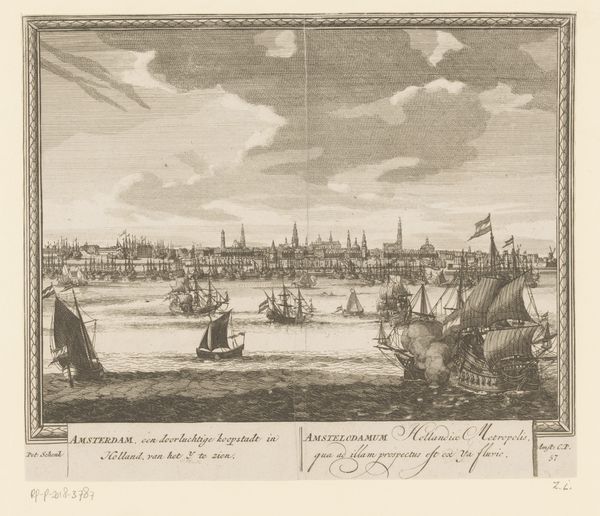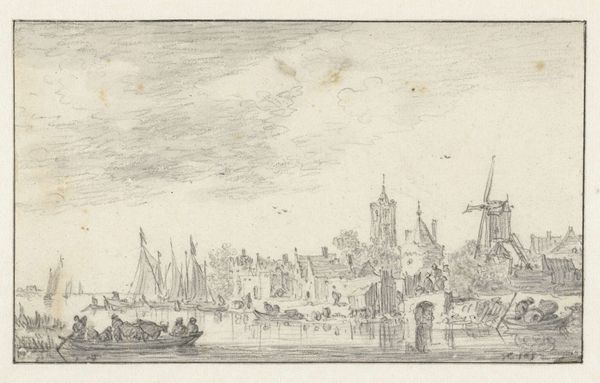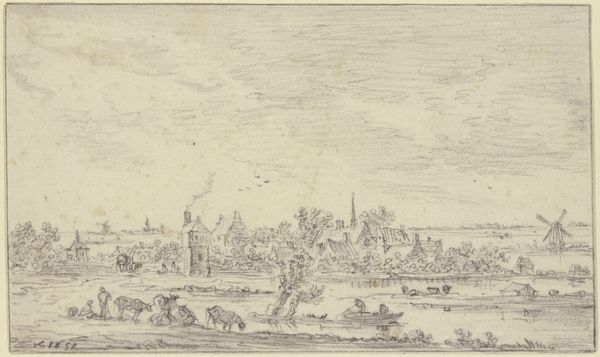
drawing, print, etching, ink, pen, engraving
#
drawing
#
baroque
#
dutch-golden-age
# print
#
pen illustration
#
etching
#
landscape
#
ink
#
pen
#
cityscape
#
engraving
Dimensions: height 70 mm, width 84 mm
Copyright: Rijks Museum: Open Domain
Curator: Here we have Abraham Zeeman's "Gezicht op Gorinchem" from around 1730, a captivating little etching that showcases the Dutch city. Editor: My first thought? Utter peace. There’s such tranquility in the delicate lines, in the way the clouds stretch out, even in the tiny figures along the shore. It’s like a frozen, contented sigh. Curator: It's more than just a pretty picture; it's a window into a specific time and place. Zeeman was very interested in maritime scenes and cityscapes, providing detailed records of Dutch life in the 18th century. This piece, rendered with pen and ink, serves as an almost documentarian perspective, although idealized for sure. Editor: Idealized perhaps, but I find that the details lend a sense of reality, too. The windmills, the boats, the central church tower— they ground the scene, give it depth, and suggest a community thriving and active within the context of its environment. It feels honest in a way only a detailed cityscape can be. You feel invited in! Curator: Definitely. The composition draws your eye across the water and towards the town. This piece provides valuable insights into the urban planning and architecture of the period and allows historians to better understand urban development. It's also an excellent example of how prints circulated visual information in the 18th century, functioning almost like postcards or news illustrations. Editor: So, what kind of conversations do you think this engraving prompted when it first entered society? Was it about trade routes, architectural changes, even simple nostalgic affection for "home"? What tales do you think each careful line had a story to tell? I imagine its new owner pouring over every rooftop! Curator: All of the above, most likely. These prints became talking points in gathering places like coffee houses, allowing folks to learn about their ever-changing world. Zeeman’s etching bridges art and civic life in the 1700s and the image persists today as a valuable record. Editor: Right, it does make me ponder how we, as individuals, and as communities, shape and are shaped by, the places we inhabit. It definitely offers perspective, a view back to understand the passage of time. Curator: Indeed. Art invites dialogue.
Comments
No comments
Be the first to comment and join the conversation on the ultimate creative platform.
